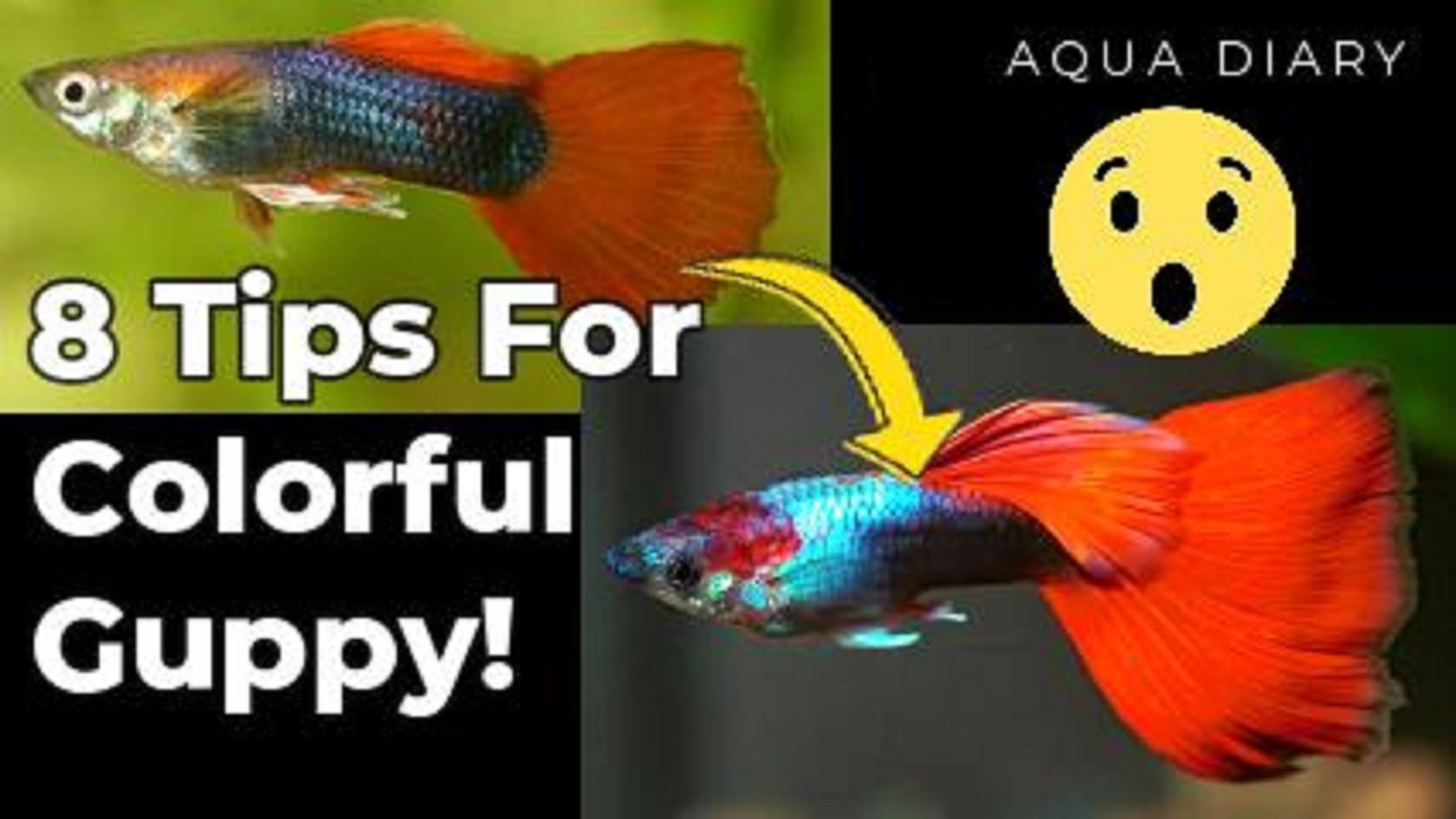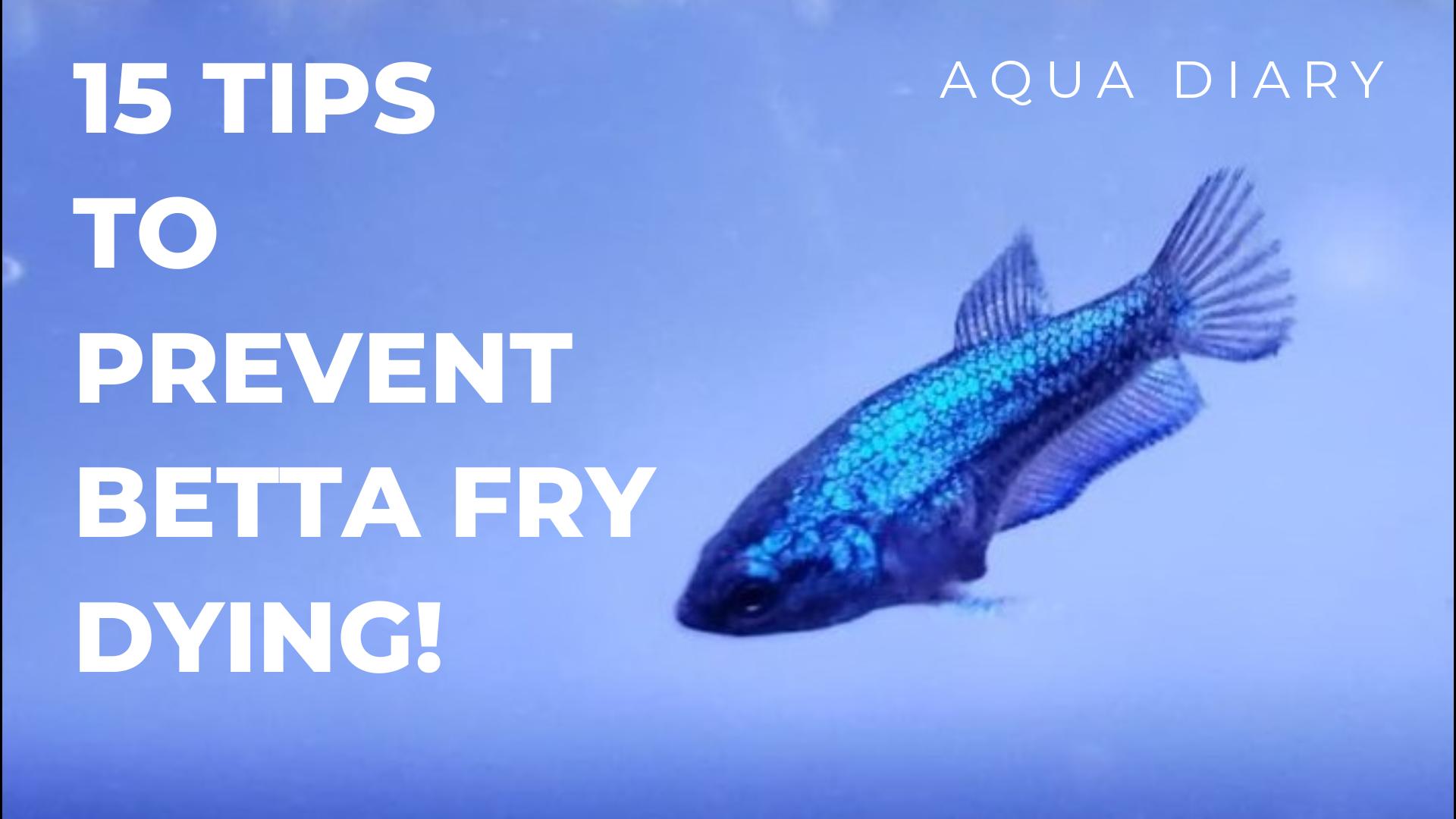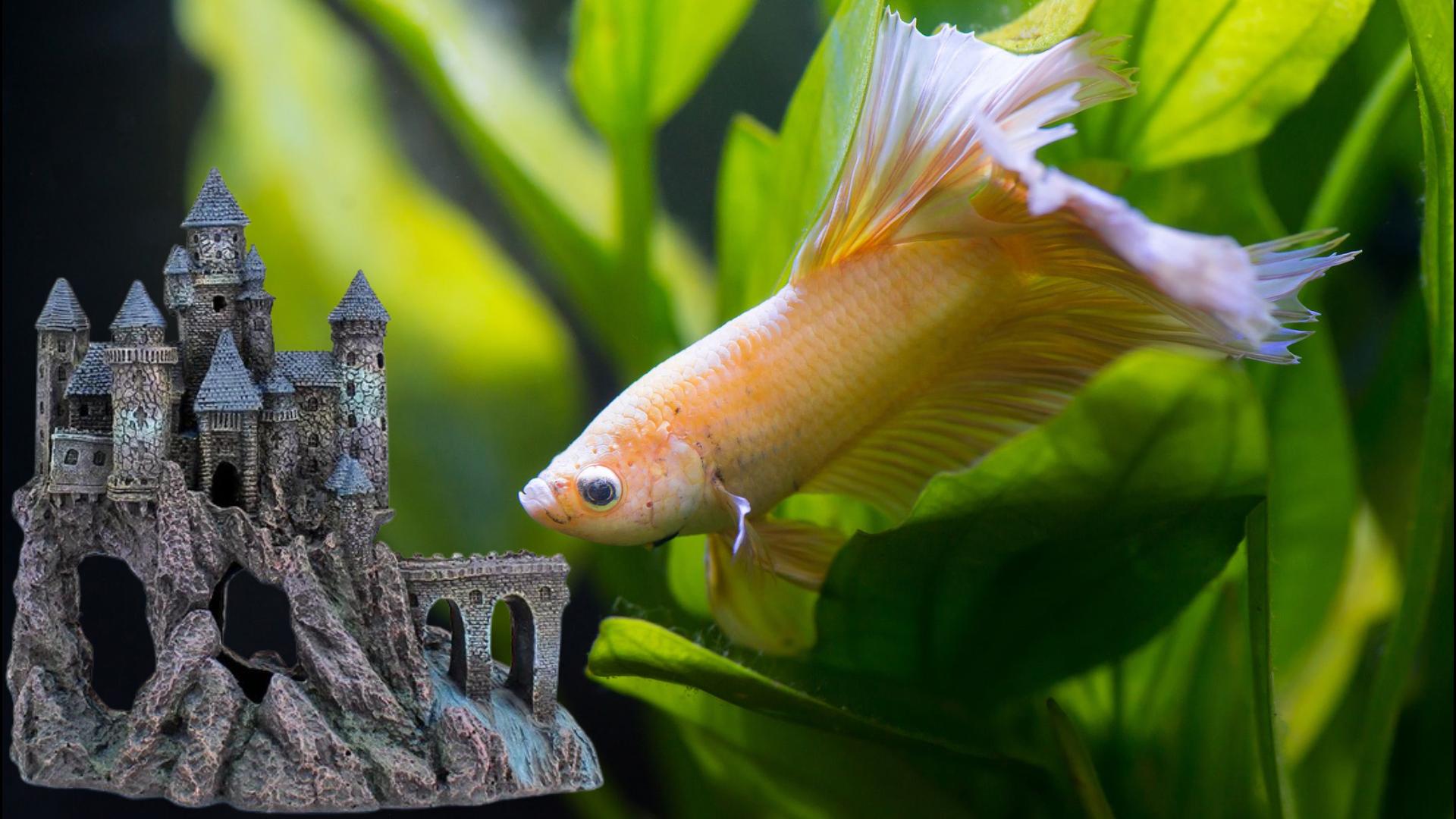You can train your betta fish to do some tricks by teaching them; surprisingly it’s easy to train betta fish. Betta fish are intensely curious by nature; training your betta fish is good to keep them active and engaging.
These tricks are really fun to teach, and also greatly improve bonding experiences between you and your betta fish. In this blog, we are going to see the most interesting betta tricks like feeding them from your hand, teaching them to jump, Swimming through hoops, and many more.
Bettas are clever little fish, but that doesn’t mean you can get the most out of your training sessions. Fish have short attention spans, so we recommend starting with five-minute sessions. You can work your way up to 10 minutes once your betta gets used to their new training schedule.
Please do not tease your fish and be sure to reward all the tiny progressions that your betta fish makes. Some betta will get the hang of these tricks fast and some may take a bit longer. Be patient, and you will be amazed by what these smart little guys and girls can achieve. Here we begin with some interesting tricks that your betta can learn
Get your betta’s attention (level: Easy)
Although it might surprise you, betta fish can recognize you. They actually can become attached to their owners. They are more likely to recognize you once you start spending time near your fish. If you have just acquired your betta, give it at least a week to recognize you.
You will know that your betta is ready if he or she starts swimming toward you if he sees you.
Follow the finger (level Easy) – Train your Betta fish
One of the easiest is teaching your fish to come to you when you want them to. Drag your finger across the front of the fish tank. Softly tap on the glass and see if he looks at your hand. If Betta moves towards it, reward her quickly with a treat.
If your betta does not notice you, shake your finger until betta notices. Move your finger in multiple directions.
First, move your finger to opposite sides of the tank. Next, move your finger vertically up and down. Reward your fish each time she follows you. Train for three to five minutes at a time over several days. Proceed to other tricks once she consistently follows your finger.
Once your betta can follow your finger, teaching other tricks will be easier
Train your betta to flare (level Easy)
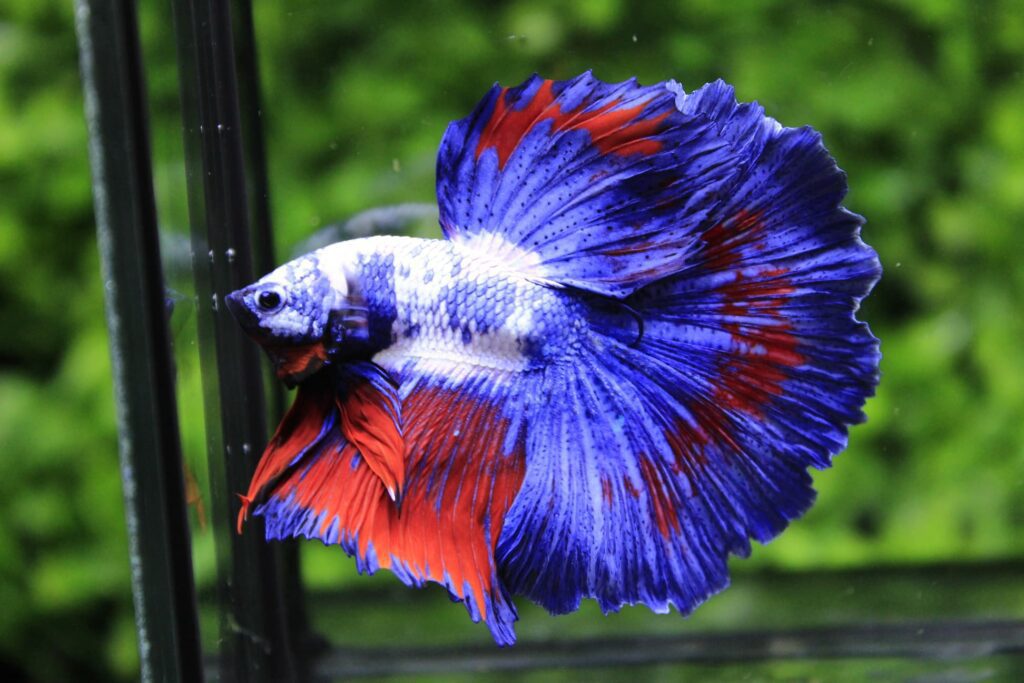
Betta flaring provides them with an exercise that prevents boredom and promotes bubble nest building. Only perform the flare trick three to five minutes a day or you can overexert your betta. Gather a small mirror and a red or black-capped pen.
Use the same colored pen throughout training so your betta will recognize the pen. Once your betta flares, place the pen next to the tank glass. Repeat this process two to three more times. Sometimes your betta will get afraid and may move away. Keep on trying.
Give your betta food or a treat each time your betta flares. You can use a pen, stick, mirror, or other betta fish near to perform this exercise.
Eat from your hand (level Intermediate)
After your betta has learned to swim up to your hand when they want a treat, put a piece of food on your fingertip and place it in the water. Your fish should gobble it right up. Gradually you can transition to holding the food slightly underwater in your finger.
Try feeding your Betta a food they like while training them. Betta may even jump if you hold blood worms or insects above the water level just a bit!
Jump for a treat (level Hard) – Train your Betta fish
In their natural habitat, wild Bettas instinctively attack food on the water’s surface. You can tap into this instinctual behavior. Place a pellet under your fingernail or on a wet finger; it should adhere. Gently wiggle your finger just above the water’s surface to capture your Betta’s attention.
Occasionally, your Betta may leap toward your finger; reward them with the pellet. If they aren’t interested immediately, persevere patiently.
Wait for your Betta to show interest; you might need to dip the pellet’s tip into the water and wait for it to approach your finger or the pellet. Upon success, reward them. After a few days, raise the pellet above the water and repeat.
With practice, your Betta will jump for the reward, but be mindful not to overfeed. Practice a few times daily to keep it engaging.
Swim through hoops (level Hard)
Craft a hoop from a pipe cleaner or plastic. Identify your Betta’s favorite food and use it as bait. Suspend the hoop within the tank for the Betta to swim through.
Move the bait to entice your Betta through the hoop. Gradually elevate the hoop as your Betta becomes more accustomed to swimming through it, eventually having it touch the water’s surface.
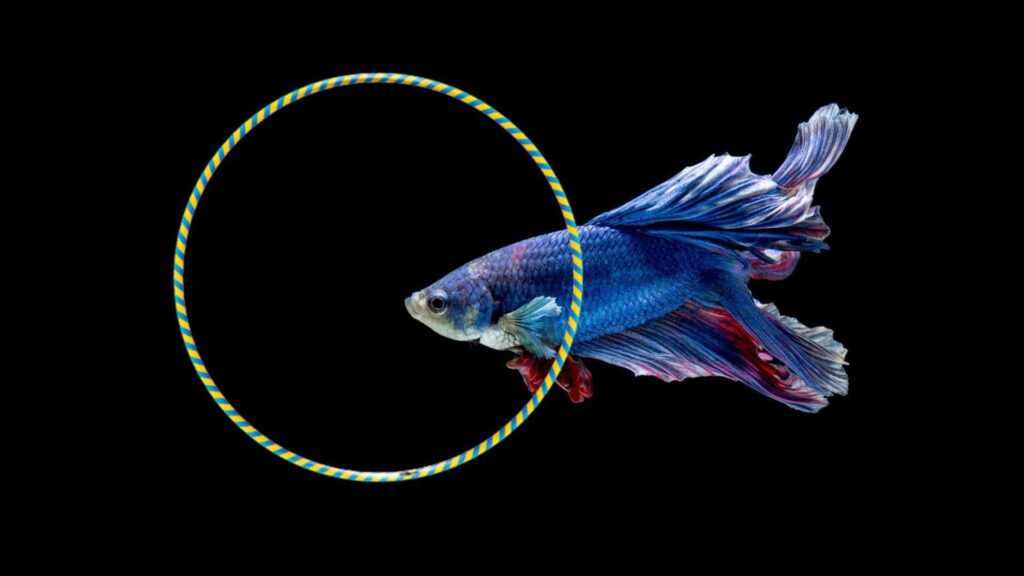
With practice, your Betta might leap through the hoop for a food reward. Alternatively, try luring your fish through the hoop by placing both hands inside the tank and offering a food bite.
Be cautious not to overfeed your Betta. While training treats are fine, excessive feeding may lead to illness or death. Remember, this trick can be challenging, so don’t get discouraged. Some pre-made Betta training kits are available in the market for you to try.
Betta toys (level Intermediate)
Try adding bobbing objects to the top of the tank. Get a small floating toy or a fishing bobber. Make sure the toy is clean before you place it in the water.
Put a small plastic ping-pong ball on the top of the tank. See what the betta does! Some Betta will push it around their tank.
If the Betta doesn’t play with the ball immediately, give your fish some time to get used to it. There are a lot of readymade betta toys available in pet stores you can directly buy it try them as well. Marina Betta Ornament,
Zoo Med Floating Betta Log, and R2 Fish School kit are some readymade betta toys you can find online to buy
Feed your Betta live food
This is a great way to entertain and train your fish to do tricks. Fish or aquarium-specific stores often offer live worms that most Betta will chase with zeal. Always feed your Betta a balanced, varied diet.
Too many treats or meals will not be good for your fish but they can be given once in a while with no problem. You just don’t want to feed them too much and get them sick!
Resting Spots and Toys To Train Your Betta
Now let’s look at perfect resting spot and training toys for betta fish in their tank. Betta fish love places to rest and hide, and providing such options can keep them happy and healthy. In this section, I will discuss the best resting spot options and products for your betta fish.
#1. Plants – Happy Betta Tank
The first and most obvious resting place for betta fish is plants. Betta fish are naturally curious and enjoy exploring their tank. In the wild, betta fish live in densely planted areas with many hiding spots. By providing plants in your betta tank, you create a more natural and familiar environment for your fish. This can reduce stress and promote overall health and well-being.
Live plants are a great addition to any fish tank as they produce oxygen and absorb harmful chemicals like ammonia, nitrate, and phosphate from the water. By having plants in your tank, you maintain healthy water quality and reduce the disease risk for your fish.
By choosing a variety of plants, you can create a visually appealing and dynamic environment for your fish. Also as live plants can grow, it keeps your betta fish tank interesting and gives your fish an option to explore.

Live or silk plants?
Live plants are an ideal option for betta tanks as they provide more natural benefits, such as oxygen production and water quality improvement. However, they require more care and maintenance, such as pruning and fertilizing. Silk plants are an excellent low-maintenance and cost-effective alternative to consider.

I have used silk aquarium plants in my aquariums for years. I’ve found that specific products are a safe and healthy option for betta fish since they are made of durable and non-toxic materials. Plants come with weighted bases that make it easy to move and adjust their position in the aquarium. Additionally, this gives your betta fish a variety of hiding and resting spots.
One of the benefits of using silk plants in a betta tank is that they won’t die or decay, which can happen often with live plants. This means you won’t need to remove dead plant material, which reduces tank maintenance. Check the description or comment section for product links.
#2. Caves and hideouts – Happy Betta Tank
Caves and hideouts offer excellent resting places for betta fish. These structures create a sense of security and familiarity, fostering a natural environment.
Incorporating diverse caves and hideouts in a betta tank enriches its visual appeal and dynamism. Given bettas’ territorial tendencies, these additions aid in segregating the aquarium, curbing aggression.
Material choice matters; ceramic or resin designs are fish-safe and avoid chemical leaching. Metallic or painted surfaces should be avoided to prevent harm. Explore product links in the pinned comment for showcased items in this blog focusing on caves and hideouts for betta fish.
#3. Driftwood – Happy Betta Tank

I’ve employed various driftwoods, sourced from both pet stores and my backyard. Driftwood holds the power to enhance aquarium aesthetics, becoming a captivating focal point. Its versatile nature allows for diverse arrangements, forming unique structures.
Apart from its aesthetic and hiding attributes, driftwood leaches tannins and natural compounds, enhancing water quality. Tannins can lower pH, aiding specific fish varieties that thrive in acidic conditions. Moreover, the wood’s innate compounds possess antibacterial and antifungal properties, promoting clean, healthy water.
Driftwood fosters natural fish behavior like grazing, while some fish even munch on it for dental and digestive health. It also cultivates a substrate for beneficial bacteria, aiding waste breakdown, refining water quality, and minimizing frequent changes.
#4. Natural or artificial betta leaf – Happy Betta Tank
Betta leaves, also known as Indian almond leaves or Catappa leaves, are leaves from the tropical almond tree. They are commonly used in Betta fish tanks as a natural way to maintain water quality and create a comfortable and stress-free environment for the fish.
Betta leaves contain beneficial properties such as tannins, humic acids, and flavonoids. These properties can improve water quality by lowering the pH, reducing harmful bacteria and parasites, and enhancing the natural color of the fish.
These leaves can also help simulate Betta fish’s natural habitat, as they often live in water with low pH and high tannin levels in the wild. In addition to their water purification benefits, Betta leaves also serve as fish resting spots.
The broad sturdy structure of leaves provides a comfortable place to rest, hide, and explore. This can reduce stress in fish and promote a healthy, active lifestyle.
Almond leaves must be cleaned and soaked before introducing them to the tank. Monitoring their condition is crucial, as they will eventually degrade. In such instances, consider artificial betta leaves. They’re sturdier, lasting longer without decomposition. This reduces replacement frequency, saving time and money.
Maintenance is also simpler; they don’t generate waste, easily cleaned by rinsing or wiping. For a distinctive resting spot, explore the betta leaf hammocks, linked below. These plastic leaves attach via suction, creating a tiny hammock for your fish to lounge on.
It’s a playful emulation of their natural leaf-perching behavior, adding a delightful touch to your tank.
#5. Aquatic plant pot – Happy Betta Tank
Enhance your betta tank with aquatic plant pots, offering hiding spots and stress reduction. Crafted from clay or plastic, these pots come in diverse sizes and shapes. They serve as refuges for territorial bettas, fostering tranquility.
Additionally, they promote aquatic plant growth, hosting species like Java ferns, Anubias, and Cryptocoryne, enhancing water quality by absorbing toxins. Beyond functionality, these pots elevate your tank’s aesthetics, creating captivating underwater scenery.
#6. Betta tunnels
Betta tunnels are a type of aquarium decoration that provides a resting spot for betta fish. In addition, they offer a place to swim and explore in the Happy Betta Tank. These tunnels are typically made from plastic, ceramic, or resin and designed for betta to enjoy.
In addition to offering a resting spot in the Happy Betta Tank, betta tunnels also provide a stimulating environment for fish. This can prevent boredom and encourage natural behaviors.
No matter which resting spot option you choose from today’s discussion, it’s clear that each one provides benefits for your betta fish and their tank environment.
They create a more aesthetically pleasing aquascape and offer a comfortable place for your betta to rest. These items can contribute to a happier and healthier home for your fish.
Now let’s look at how much beneficial can adding mirror toy to your tank. Do betta fish like mirrors? Is displaying mirrors harmful to a betta’s health?
Does showing a mirror count as betta abuse? Are mirrors going to make them sick and stressed? How can I show them a mirror safely? Let’s answer these questions in this section.
When you place a mirror in your aquarium, your betta sees its reflection and thinks there is another betta on its territory. It flares and swims around aggressively, possibly even hitting its reflection. This is great for mimicking the betta’s natural habitat and helps the fish stay healthy and active. Removing the mirror after a few minutes will make your betta believe he was strong enough to fear the other fish. Also, the fish has now exercised and probably feels pride that its territory has been defended.
Do Betta Fish Like Mirrors?
As far as I understand, betta fish hate mirrors. They see their reflection and start fighting against it. It might seem cruel to stress your betta by forcing them to see their own reflection.
However, it’s important to have the chance to flare up in a restricted tank environment once in a while. It’s much better for your betta to be angry at themselves in the mirror instead of taking their aggression out on innocent tank mates, or even their own fins.
What Do Mirrors Do for Betta?
There are 3 main things a mirror does for your betta fish. When we keep fish, we constantly mimic their natural environments and behaviors to keep them happy. I have observed betta fish makes bubblenests after few days of flaring exercise.
He’s doing this to compete and show off his dominance. To be honest, I had never believed this logic in the past. But once I introduced another female or male betta, I noticed that they often build bubble nests in a couple of days.
Betta fish can become bored easily and display negative behaviors like glass surfing and fin nipping. I can tell you that, placing a mirror in his tank can relieve boredom and provide entertainment to keep your betta happy. The mirror will provide your betta with something new to look at and explore for a few minutes.
Betta fish are known for becoming constipated, which can be dangerous to their health. If your betta is constipated, placing a mirror in his tank can help him relieve himself. Bettas are able to relieve constipation when they flare their fins. Flaring stretches their muscles enough to help them pass bowel movements.
Should you put a mirror on betta fish?
My recommendation would be to place a mirror at least once a day to allow them to exercise. This is great for keeping them active. Personally, I enjoy watching their graceful fins open and flaring against objects.
How long should the mirror be kept?
You can put a mirror in your betta’s tank daily for 1 to 2 minutes, but never for more than 5 minutes. Don’t leave a mirror on your betta tank permanently. If your betta believes there is always another fish in their tank, they will be aggressive and stressed. They will even stop eating as they focus on defending their territory. So be very careful not to overdo mirror time.
Why is your betta glass surfing?
Another thing to watch out for is accidental mirrors that cause your betta fish’s glass surfing or flaring against. This means there are some reflective surfaces in your tank where your betta fish can see their reflections.
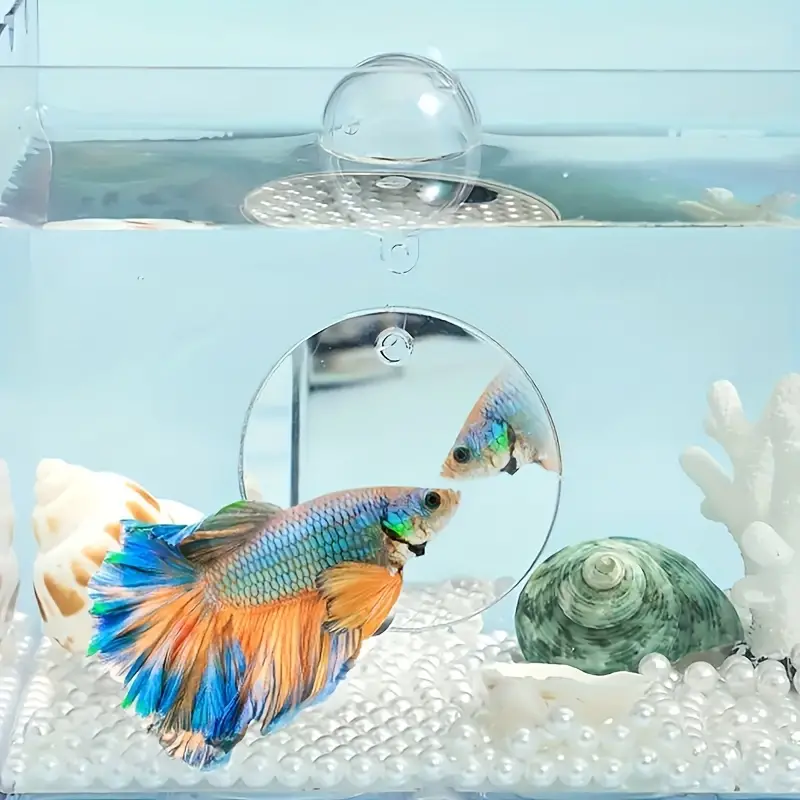
How do I stop my betta from fighting reflection?
Just like having a mirror in the tank constantly, some decorations or tank backdrops can act like mirrors. Please remove any objects in your tank causing reflections. It usually caused by light angles or plastic plants. I had a similar problem with one of my tanks when the background image reflected and acted like a mirror due to my light setup. I taped my background with a black tape outside to cover most angles.
Are betta exercise mirrors abusive?
In my opinion, it is not abusive when used for a short period of time! Flaring every day is great for male betta fish. It gives them exercise and keeps them entertained. But I wouldn’t recommend keeping them permanently or for a long time in the tank.
If it’s left in the tank for a long period of time, it can stress them out to the point where they bite their fins and become highly stressed. You can teach several tricks also to your betta to give an exercise as alternative of mirror flaring, check this link for more.
Where to buy a betta fish mirror?
There are various mirror products available that help you play with betta fish. Betta fish floating mirrors and aquarium-wall mirrors are popular choices. But you don’t need those specific products.
Any mirrors in your house should work too. There are several fun products to buy, you can find them in amazon or even at our product recommendations page.
Final Thoughts
Using betta fish mirrors are not abusive. But use it in right way, don’t exceed over 5 mins per day. Happy Betta Keeping! The video version of this topic is below.


